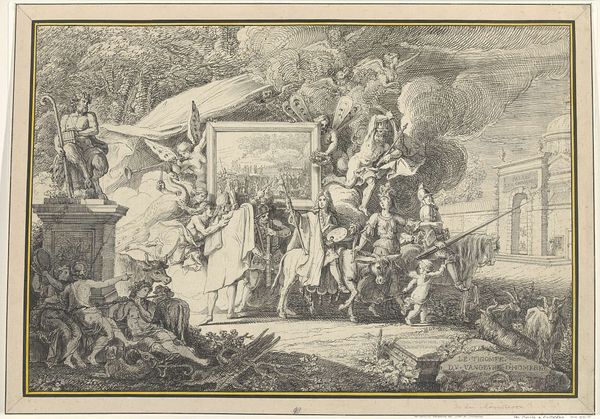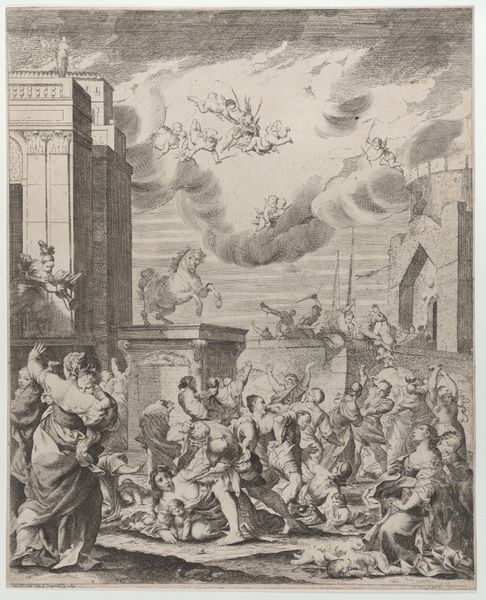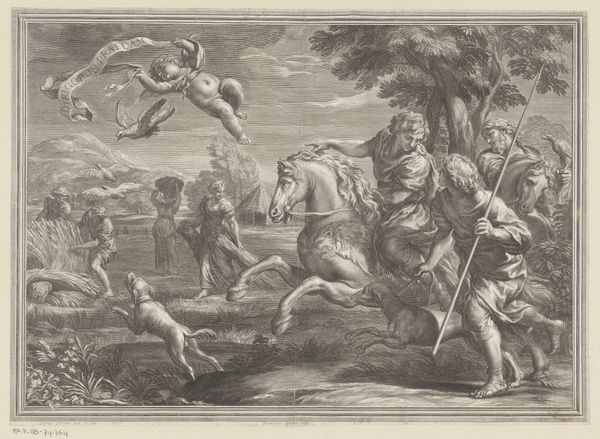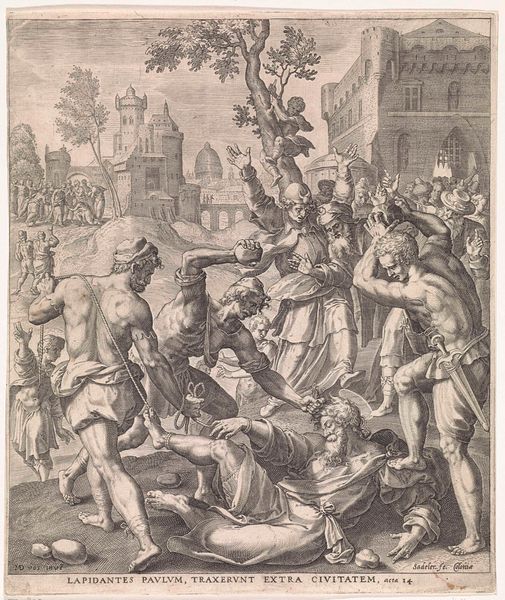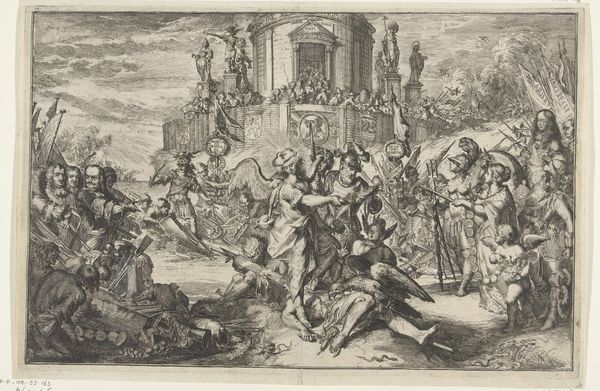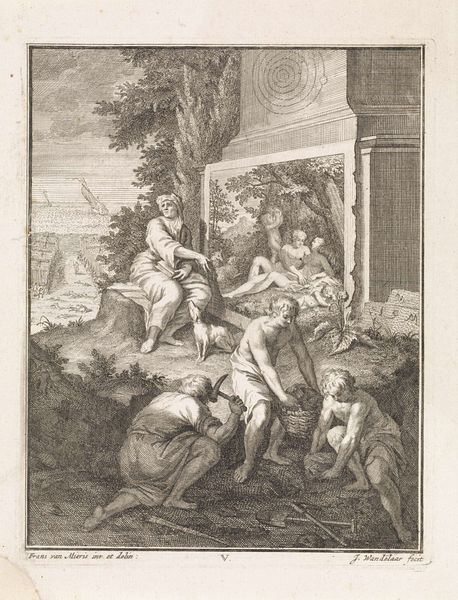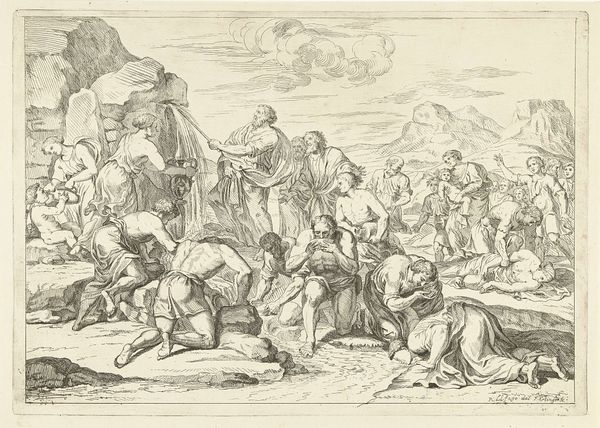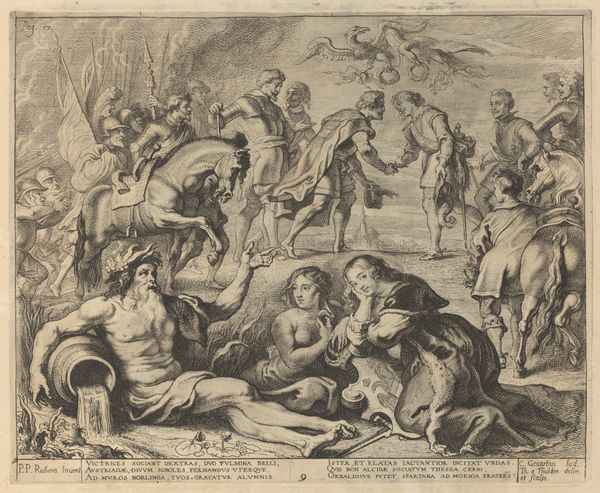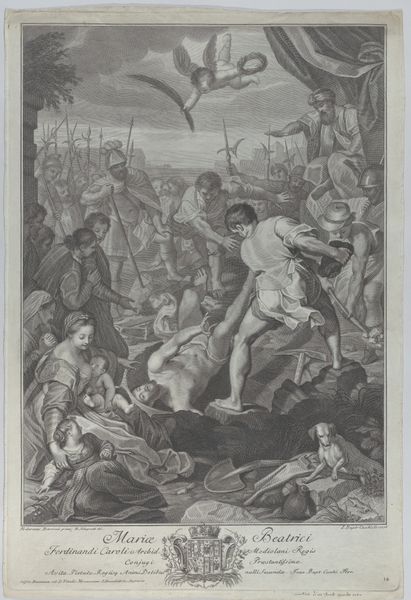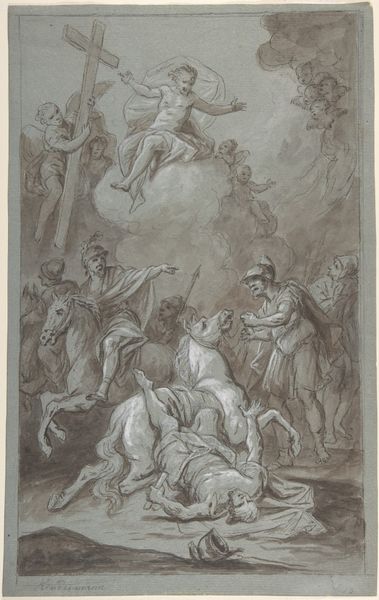
drawing, paper, ink
#
drawing
#
ink drawing
#
allegory
#
baroque
#
landscape
#
figuration
#
paper
#
ink
#
history-painting
Dimensions: 233 × 193 mm
Copyright: Public Domain
Editor: So, this is an ink drawing on paper, "The Triumph of David," of unknown date and artist. It has this rather chaotic feel, figures spilling across the composition, almost like a parade frozen in time. It definitely evokes a theatrical quality. What social context can we see reflected here? Curator: The drawing depicts a celebratory scene, likely referencing the biblical story of David's victory over Goliath. Now, the lack of attribution certainly raises questions. It invites us to consider the role of patronage during the Baroque period. How might the drawing function as a preparatory sketch for a larger, perhaps commissioned work? The theatrics you mentioned fit perfectly within Baroque sensibilities that relished drama and spectacle to demonstrate power. Who do you think paid for similar artistic endevours during that time? Editor: Powerful families, royalty, the church, all vying to represent themselves through heroic imagery. Curator: Exactly! So how does this small ink drawing participate in that broader conversation about power, religious messaging, and visual culture in Baroque Europe? Think of the relationship between the individual artist and their social context. The artist, by depicting David's triumph, implicitly celebrates divinely sanctioned authority. Now consider that most could not read during that time. What message would this imagery send? Editor: Visually impactful! It makes me wonder, what are people seeing when they see an image like this versus when they read it on their own time? Curator: And it really exemplifies the entanglement of art, religion, and power. By celebrating David's triumph, the work potentially justifies contemporary social hierarchies, reinforcing the notion of divinely ordained rule. It's a good example of art acting as a powerful social tool. I wonder what a museum exhibit could look like highlighting the powerful images that reinforce political narratives? Editor: That would be very eye-opening, examining the subtle politics embedded within these seemingly straightforward heroic depictions. Thank you for untangling this a bit for me. Curator: Of course! It’s important to always contextualize art in the world that created and received it.
Comments
No comments
Be the first to comment and join the conversation on the ultimate creative platform.


